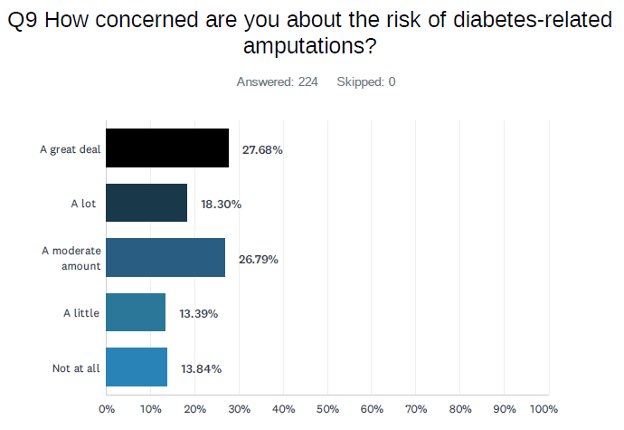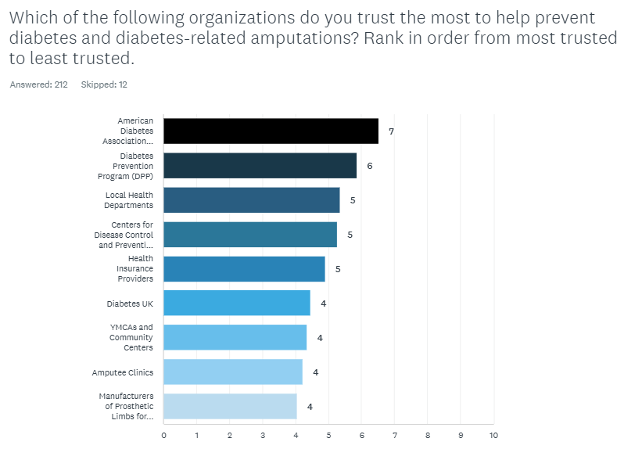About this Case Study
This case study provides an example for organizations seeking to better understand public attitudes and awareness around health-related issues. If you are in the healthcare or wellness sector with a focus on educational campaigns or prevention strategies, this case study is for you.
This case study focused on evaluating awareness and understanding of prediabetes, perceptions of its seriousness, and attitudes toward organizations working to prevent diabetes and its complications. The insights aimed to help Blatchford design effective messaging for an ad campaign linking diabetes awareness to lower-limb amputation prevention.
Summary
Blatchford, a leading UK-based manufacturer of lower-limb prosthetics, aimed to launch a diabetes awareness campaign. To ensure the campaign resonated with the public, we conducted a research study to evaluate awareness of prediabetes, factors contributing to diabetes complications, and trust in organizations promoting prevention. The study provided actionable insights to shape Blatchford’s messaging and maximize the campaign’s impact.
Here’s the Challenge
Blatchford faced the challenge of connecting public awareness of diabetes and its complications—specifically lower-limb amputations—with the importance of prevention. They needed to understand current attitudes toward prediabetes and identify what types of messaging would best resonate with their audience.
Here’s the Idea
We designed a survey to explore:
- Awareness and understanding of prediabetes and its risks.
- Motivations for engaging with prevention-focused organizations.
- Concerns about diabetes-related complications, such as amputations.
- Trusted sources for diabetes education and prevention information.
The goal was to gather data that would help shape a compelling narrative linking diabetes prevention with Blatchford’s mission.
Here’s the Execution
A quantitative survey was conducted with 224 respondents, targeting individuals with varying levels of awareness and engagement in diabetes prevention. Key components included:
- Evaluating familiarity with prediabetes and its seriousness.
- Assessing motivations for learning about prediabetes, such as personal health concerns and family history.
- Understanding willingness to support prevention-focused organizations.
Respondents were screened to reflect diverse demographics and ensure relevance to the campaign’s target audience.


Here’s the Positive Outcome
Two key findings stood out:
- Awareness and Risk Perception: 87.05% of respondents were aware of the link between diabetes and amputations, but only 27.68% were highly concerned, indicating a need to elevate the perceived severity of this risk.
- Trusted Sources: Respondents identified local health departments and the Centers for Disease Control and Prevention (CDC) as the most trusted organizations for diabetes prevention information.
Applications to Business Objectives
The findings empower Blatchford to:
- Craft messaging that highlights the link between diabetes prevention and the risk of lower-limb amputations, addressing gaps in public concern.
- Partner with trusted organizations like local health departments and the CDC to enhance credibility.
Develop campaigns focusing on personal stories and health outcomes to connect emotionally with the audience.